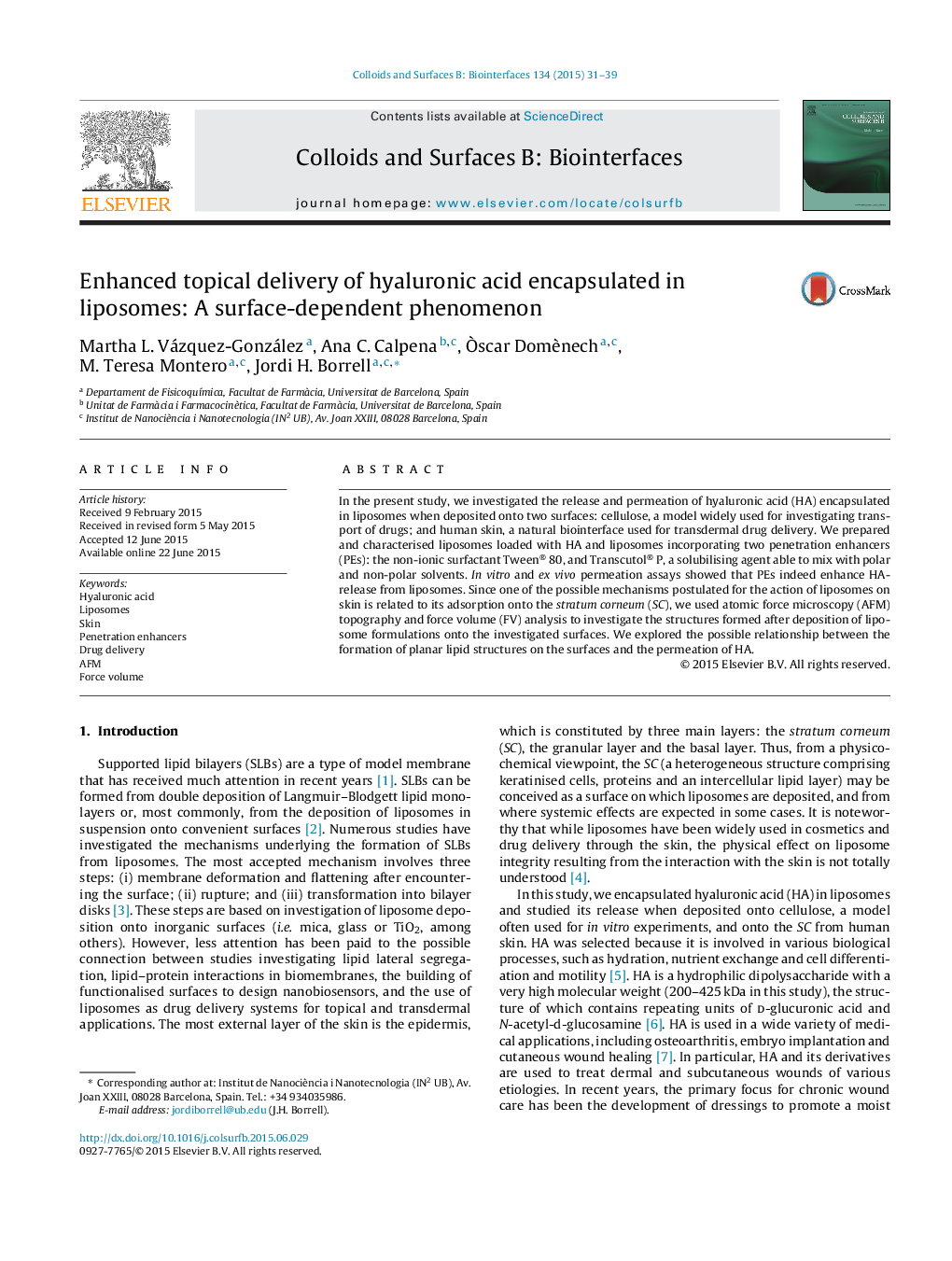| Article ID | Journal | Published Year | Pages | File Type |
|---|---|---|---|---|
| 599357 | Colloids and Surfaces B: Biointerfaces | 2015 | 9 Pages |
•Hyaluronic acid encapsulated in liposomes shows increased bioavailability for topical application.•Penetration enhancers incorporated modify the permeation of HA in cellulose and human skin.•Structures onto surfaces were observed by AFM.•Adhesion forces were measured by AFM-Force volume mode.•Multilayer lipid structures and permeation process seem to be related.
In the present study, we investigated the release and permeation of hyaluronic acid (HA) encapsulated in liposomes when deposited onto two surfaces: cellulose, a model widely used for investigating transport of drugs; and human skin, a natural biointerface used for transdermal drug delivery. We prepared and characterised liposomes loaded with HA and liposomes incorporating two penetration enhancers (PEs): the non-ionic surfactant Tween® 80, and Transcutol® P, a solubilising agent able to mix with polar and non-polar solvents. In vitro and ex vivo permeation assays showed that PEs indeed enhance HA-release from liposomes. Since one of the possible mechanisms postulated for the action of liposomes on skin is related to its adsorption onto the stratum corneum (SC), we used atomic force microscopy (AFM) topography and force volume (FV) analysis to investigate the structures formed after deposition of liposome formulations onto the investigated surfaces. We explored the possible relationship between the formation of planar lipid structures on the surfaces and the permeation of HA.
Graphical abstractLiposomes containing HA formed SLBs onto the human skin were HA is mainly liberated in the epidermis.Figure optionsDownload full-size imageDownload as PowerPoint slide
